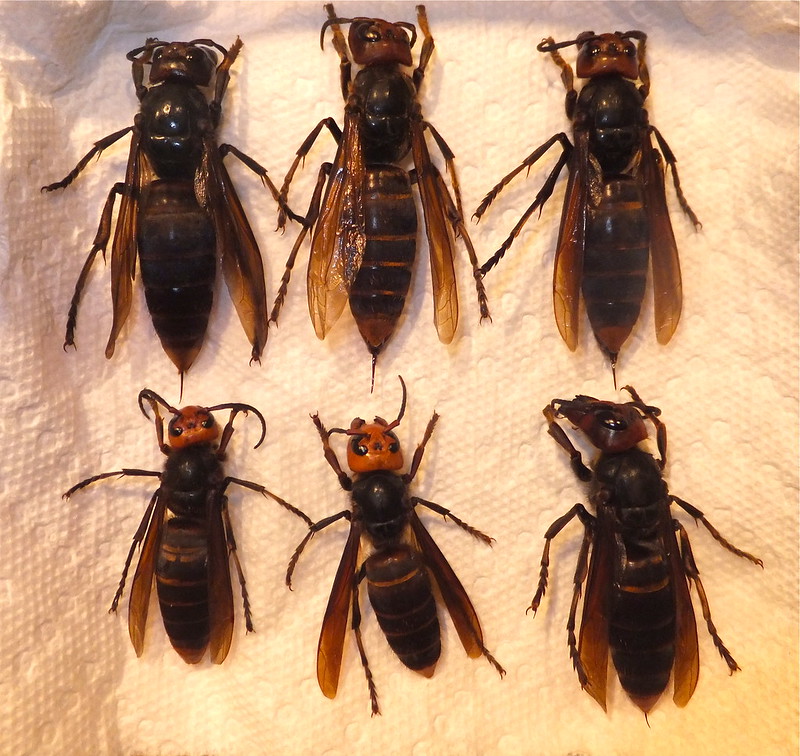It turns out that 2020 hasn’t brought us entirely bad news.
Earlier in the year, Washington state agriculture officials (and basically all of us on the internet) were concerned about the discovery of the Asian Giant Hornets — terrifyingly dubbed the Murder Hornet — for the first time in North America.
These three-inch hornets pack a painful and potentially lethal sting that could penetrate beekeepers suits, and they looked horrifying. But mainly, the concern was for the North American honeybee population, which would be unable to defend itself against the invasive Murder Hornets that feast on honeybee larva.
For most of the year, entomologists were unable to find evidence that the Murder Hornets had established any real foothold in the U.S., but that changed this month. Through tracking and local tips, state officials located an entire nest near Blaine, Wash.
On Saturday, that nest of around 200 hornets was eradicated.
Got ‘em. Vacuumed out several #AsianGiantHornets from a tree cavity near Blaine this morning. Further details will be provided at a press conference on Monday. Staff not available for interviews before then. pic.twitter.com/31kgAUuJd0
— WA St Dept of Agr (@WSDAgov) October 24, 2020
Entomologists found the basketball-sized nest, which was in a tree cavity in Blaine, WA, after several attempts to attach radio trackers to captured wasps with glue and dental floss. Sometimes the tracker fell off or the wasp chewed through the floss. Finally one worked. pic.twitter.com/nQXGNfidB0
— Ferris Jabr (@ferrisjabr) October 24, 2020
After spending weeks tracking individual hornets, the state workers were able to locate the nest in a tree near the USA-Canada border. The state workers wore special protective suits (because, again, regular beekeeper suits provide no protection against these stingers) and vacuumed the hornets out of the nest.
The state agriculture department celebrated the successful nest eradication with a Twitter video and caption of “Got ’em.”
The department did go on to add that it believes more Asian Giant Hornet nests could exist in the region, and the entomologists remain determined to wipe out the remaining nests before the hornets start attacking honeybee hives.
But this was certainly a great start.










